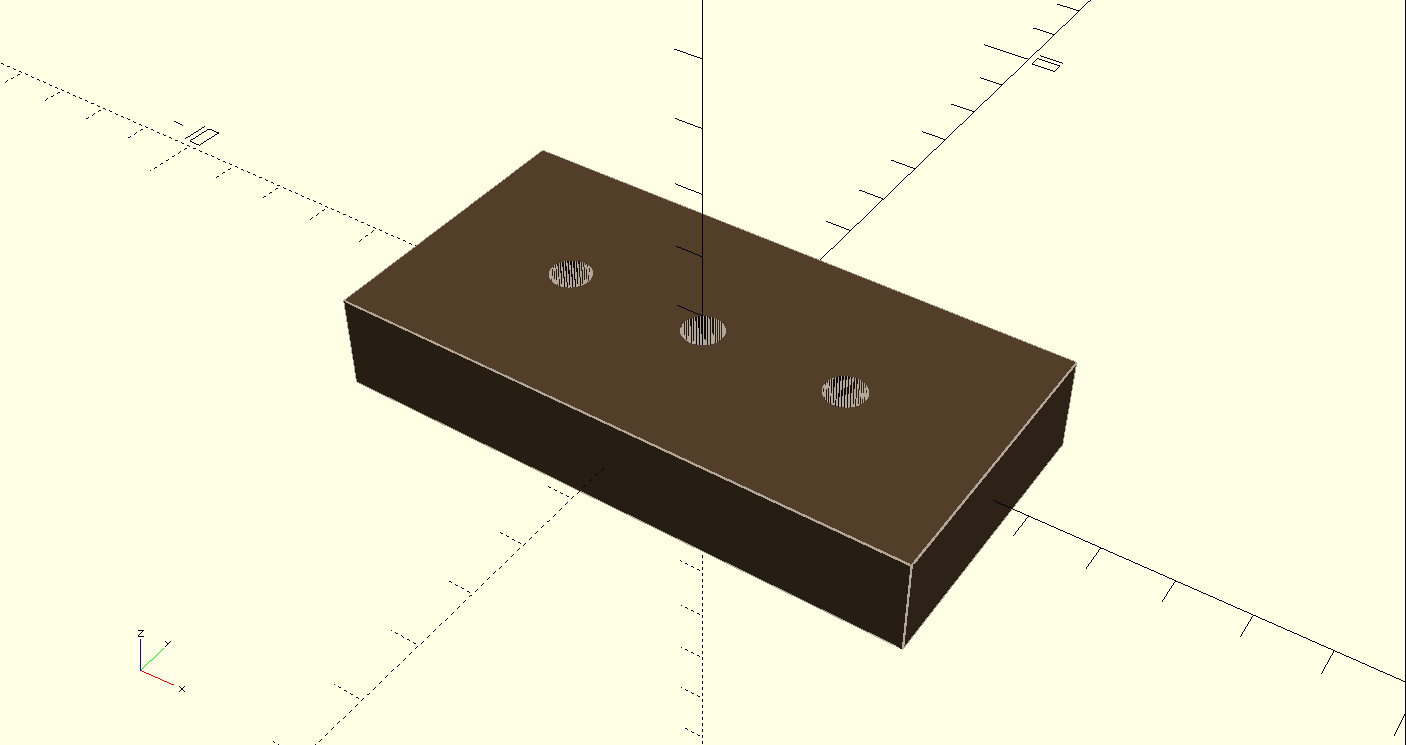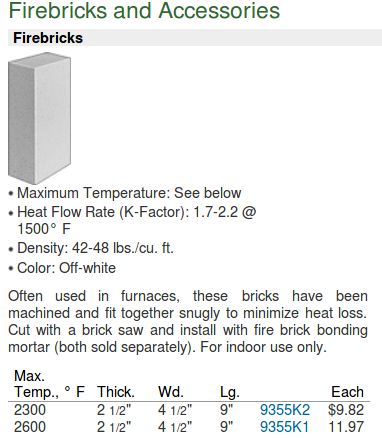Standard firebricks have dimensions of 9 X 4.5 X 2.5 inches. Initially I wanted to use bricks that were 7 X 3.5 X 1.5 so it would be easy to make brick molds using standard 2X4 lumber. However, a back-of-the-envelope thermal calculation indicated that 3.5 inches would not be sufficient wall thickness to provide adequate insulation. So, back to 9 X 4.5. I decided to keep the thickness the same as a standard 2X4 to simplify mold construction, resulting in an overall brick size of 9 X 4.5 X 1.5 inches.

The three holes in the brick are 5/8 inch. This should give plenty of clearance when assembling the kiln - the plan is to hold the bricks in place via threaded rod going through stacks of bricks. The holes also are intended to help the clay dry uniformly and prevent cracks.
For the heat transfer calculations (in an upcoming log) it is important to have an estimate of the thermal conductivity of the bricks. This site lists red brick as k = 0.6 W/(m*K) and insulating firebrick as k = 0.15 W/(m*K). Other sources list a wider range. If I use the crude natural clay from my backyard, I expect roughly k = 1 W/(m*K). If Perlite is added to the mix, as suggested in several online recipes, the thermal conductivity can probably be brought down to perhaps (I'm guessing) k = 0.4 W/(m*K).
As a point of comparison, these firebricks available from McMaster-Carr have k = 0.25 to 0.32 W/(m*K).

How do we convert McMaster's K-Factor to thermal conductivity in W/(m*K)? According to McMaster: "To calculate the R-value of additional thicknesses, divide the material's thickness [in inches] by its K-factor." Let's take the K-Factor = 1.7, and calculate the R-value for a 1 inch thickness:
The rate of heat transfer is in units of Btu per hour. The heat flux density through a given area is in units of (Btu per hour) per (square foot). The R-value is how much temperature drop there is across a material for a given heat flux density, so it has units of degrees per ((Btu per hour) per (square foot)). This is commonly simplified to (hour * square foot * degrees) / Btu, which is more compact but less intuitively clear. To convert to sensible metric units, multiply by 0.1761101838.
Finally we can recover thermal conductivity by dividing an inch (in meters) by RSI
and that's where we get our k = 0.25 W/(m*K) number reported up above for the McMaster bricks.
 Matt Moses
Matt Moses
Discussions
Become a Hackaday.io Member
Create an account to leave a comment. Already have an account? Log In.